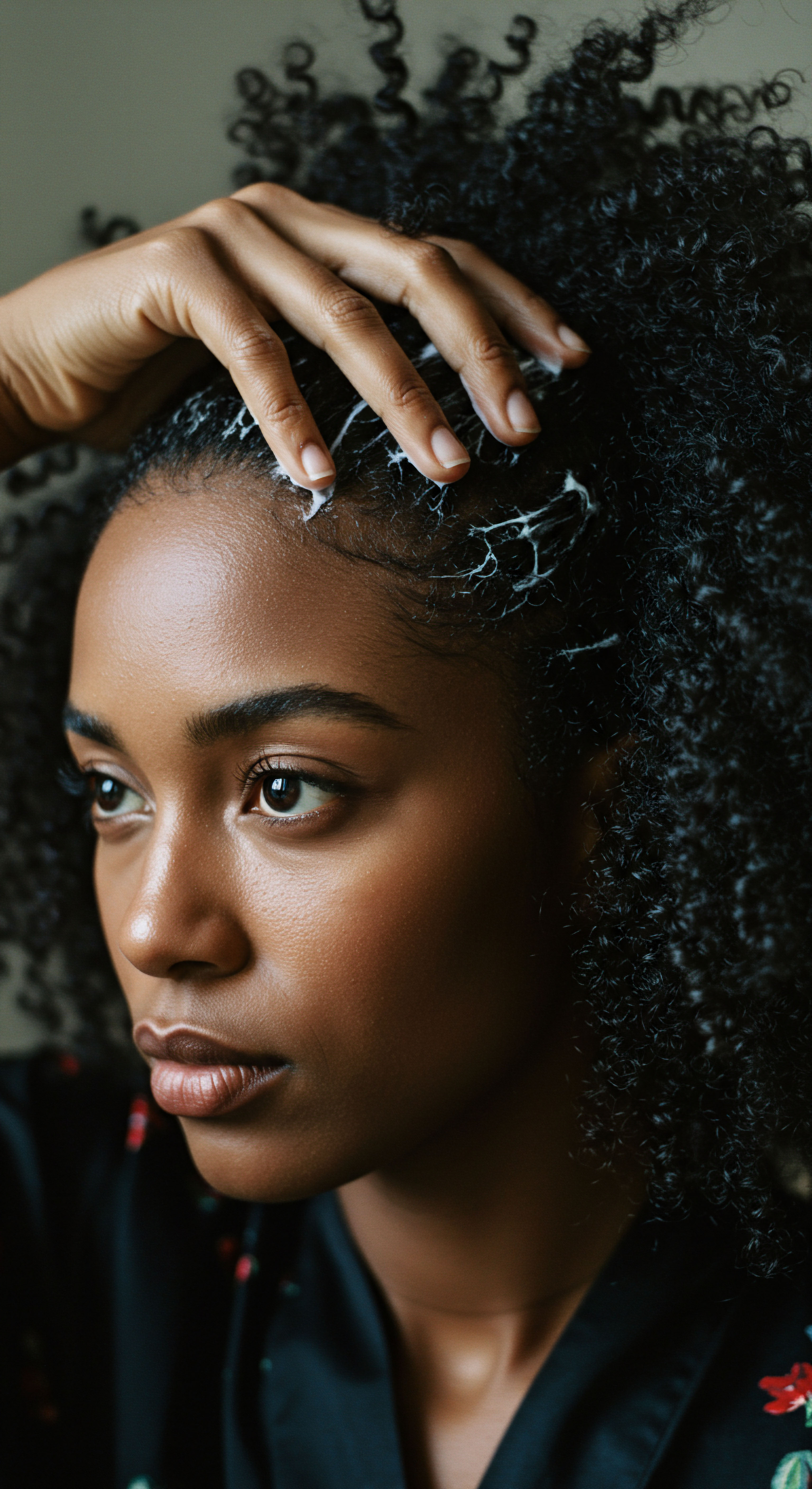
Roots
The quiet hum of life within each strand, a subtle dance of elements often unseen, holds the true story of hair’s vitality. For those with textured coils and curls, this intimate connection to our strands goes beyond mere appearance; it speaks to heritage, self-care, and the very spirit of our identity. At the heart of this resilience, nestled within the intricate architecture of every hair fiber, reside the lipids—unsung guardians of moisture and strength.
They are the gentle, invisible hands that cradle hydration, ensuring our hair maintains its inherent suppleness and luster. To truly comprehend how our hair holds onto its cherished moisture, we must first turn our gaze inward, towards these fundamental fatty compounds that form the very essence of its being.

The Silent Guardians of the Strand ❉ An Introduction to Hair Lipids
Hair lipids, though constituting a relatively small percentage of the hair’s total weight, perhaps between 2% and 6%, wield an influence far beyond their numerical presence. These organic compounds, a diverse family of fatty substances, oils, and waxes, serve as more than just structural components. They are the hair’s intrinsic conditioning agents, its natural armor against the relentless assaults of the world.
Think of them as the finely tuned instruments in an orchestra, each playing a specific note that contributes to the overall harmony of moisture balance. Without their concerted effort, the hair’s delicate equilibrium falters, leaving it vulnerable and longing for hydration.

Beyond the Surface ❉ The Lipid Layers of Hair
Hair, often perceived as a simple shaft, is a marvel of biological design, composed of multiple layers, each with its own specific role. Lipids reside in various strategic locations, performing distinct yet interconnected duties.
- The Cuticular Lipid Layer ❉ The outermost layer of the hair, the cuticle, comprises several overlapping, flattened cells, much like shingles on a roof. Adhering to this protective shield is a monolayer of lipids, primarily 18-methyleicosanoic acid (18-MEA). This particular lipid is covalently bound to the cuticle surface, creating a hydrophobic, or water-repelling, barrier. This barrier is paramount in regulating water absorption and preventing excessive moisture loss from within the hair shaft. It provides the hair with its ability to shed water, a property that helps to minimize frizz and maintain definition.
- The Intercellular Cement ❉ Beneath the surface lipids, and between the cuticle cells themselves, lies a lipid-rich intercellular cement. This “cement” is a complex blend of ceramides, cholesterol, and fatty acids. It acts as a cohesive agent, binding the cuticle cells together, ensuring their smooth alignment, and reinforcing the hair’s structural integrity. When this cement is compromised, the cuticle scales can lift, leading to increased porosity and a greater susceptibility to moisture fluctuations. This internal lipid network plays a significant part in the hair’s overall strength and elasticity.
- Internal Cortex Lipids ❉ While less abundant than in the cuticle, lipids are also present within the cortex, the hair’s main structural component. These lipids contribute to the internal cohesion of the cortical cells, providing additional support and influencing the hair’s flexibility and resilience. Their presence ensures that the hair remains pliable, reducing the likelihood of breakage when subjected to mechanical stress.
Hair lipids, though a small percentage of hair’s mass, act as vital guardians of moisture, influencing its appearance and resilience.

The Sebaceous Secretion ❉ A Crown’s Natural Veil
Beyond the lipids inherent to the hair shaft itself, an external, yet equally significant, source of lipids comes from the sebaceous glands nestled within the scalp. These glands produce sebum, a natural oil that coats the hair shaft as it emerges from the follicle. Sebum is a complex mixture of triglycerides, wax esters, squalene, and free fatty acids. This natural secretion forms a hydrolipidic film over the scalp and hair, providing an additional layer of protection.
It lubricates the hair, imparts shine, and offers a primary defense against environmental aggressors like UV radiation and pollution. The interplay between the hair’s intrinsic lipids and the external sebum is a dynamic relationship, both working in concert to maintain a balanced moisture environment.

Why Lipids Matter for Moisture Equilibrium
The collective action of these diverse lipid components is what truly orchestrates the hair’s moisture equilibrium. They form a sophisticated barrier that prevents excessive water from entering the hair shaft, which can lead to swelling and cuticle damage, and, crucially, they prevent the rapid evaporation of water from within. When this lipid barrier is intact, hair feels soft, appears shiny, and is more manageable. When it is depleted, perhaps through routine washing, chemical treatments, or environmental exposure, the hair becomes more hydrophilic, meaning it more readily absorbs water.
This increased water absorption can lead to frizz, dryness, and a heightened susceptibility to breakage. The ability of lipids to maintain this delicate balance is a testament to their profound influence on the health and vitality of our hair.
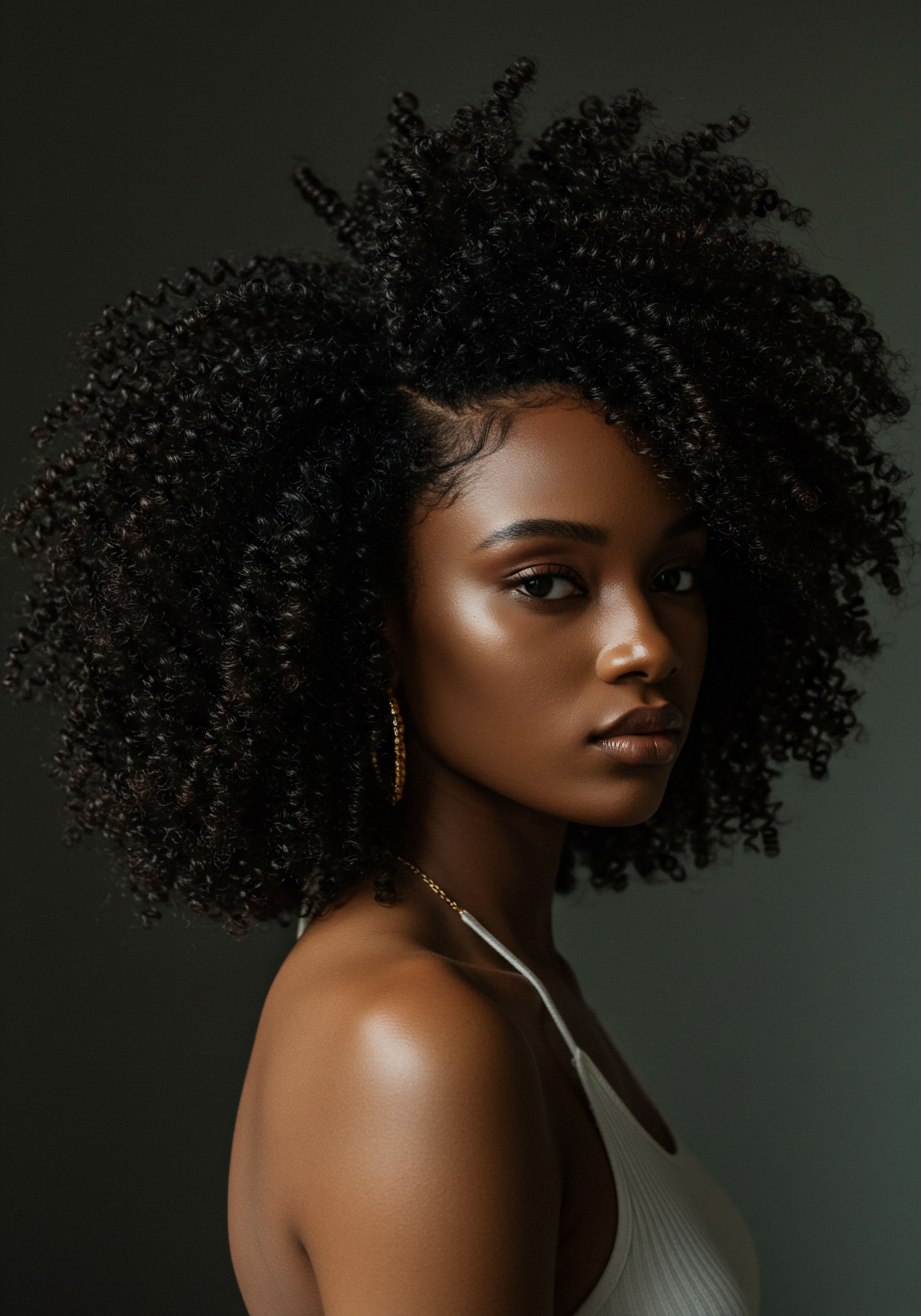
Ritual
As we move from understanding the very substance of hair’s moisture balance, our attention turns to the rhythmic, often intuitive practices that shape its daily reality. For those with textured hair, care is more than a routine; it is a thoughtful, sometimes sacred, ritual passed down through generations, or a deeply personal journey of discovery. The wisdom held in gentle touch, in the careful selection of ingredients, and in the rhythm of wash day, all speak to a deeper connection with our strands. This section explores how our deliberate actions, our chosen rituals, either honor or diminish the lipid foundation we’ve come to appreciate, guiding us towards practices that truly serve the hair’s thirst for equilibrium.

Daily Practices and Lipid Preservation
The integrity of hair lipids, particularly the outermost layer and the intercellular cement, faces constant challenges from our daily interactions with our hair. Our cleansing and conditioning practices, the tools we use, and even the way we touch our strands, all contribute to either preserving or compromising this delicate lipid shield.
- Cleansing Without Stripping ❉ The act of cleansing is essential for scalp health and hair hygiene, yet it can be a primary culprit in lipid depletion. Many shampoos contain surfactants, agents designed to remove dirt and oils. While effective, some surfactants can also strip away essential hair lipids, including the covalently bound 18-MEA on the cuticle surface. This removal renders the hair more hydrophilic, making it prone to swelling and frizz. A thoughtful approach involves choosing sulfate-free or low-sulfate cleansers, which offer a gentler cleanse, preserving more of the hair’s natural lipid barrier. The goal is to cleanse the scalp thoroughly while allowing the hair shaft to retain its protective lipid coating.
- Conditioning for Lipid Replenishment ❉ Conditioners and masks play a vital part in replenishing lipids lost during the cleansing process or through environmental exposure. Many conditioning agents contain fatty alcohols, plant oils, ceramides, and other lipid-mimicking compounds designed to adhere to the hair surface and penetrate into the cuticle layers. These ingredients help to smooth the cuticle scales, restore the hydrophobic surface, and reinforce the intercellular cement, effectively sealing in moisture. The application of lipid-rich treatments can significantly improve hair’s softness, shine, and elasticity, countering the drying effects of external stressors.
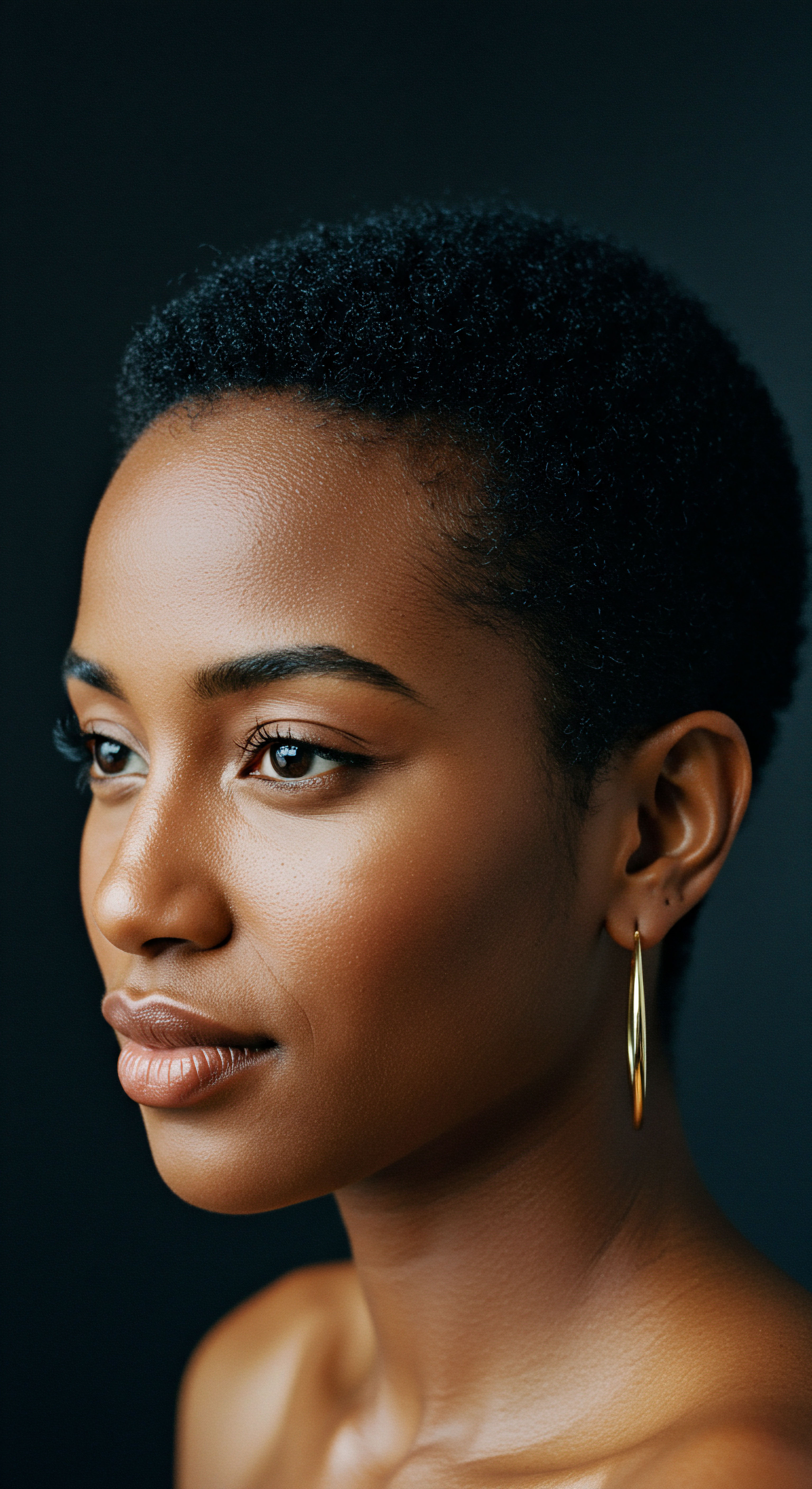
The Art of Sealing ❉ Locking in Lipid Goodness
Beyond the wash and condition, the art of sealing moisture into textured hair is a practice deeply rooted in the understanding of lipid function. Once water has been introduced and humectants have drawn moisture into the hair, a lipid-rich substance acts as a protective outer layer, slowing down the rate of water evaporation. This is where oils, butters, and lipid-rich serums truly shine.
Consider the simple act of applying a plant-derived oil after a leave-in conditioner. This oil, rich in fatty acids and other lipid components, mimics the natural sebum and 18-MEA, creating a physical barrier on the hair’s surface. This practice is particularly beneficial for textured hair, which often has a more open cuticle structure, allowing moisture to escape more readily. By consciously adding this lipid layer, we are actively supporting the hair’s inherent mechanisms for moisture retention, preventing the rapid drying that can lead to brittleness and breakage.

Gentle Handling ❉ Protecting the Lipid Barrier
The mechanical manipulation of hair also plays a direct part in the preservation of its lipid content. Aggressive detangling, tight styling, or vigorous towel-drying can cause friction that abrades the delicate cuticle and its lipid layers. This physical stress can lead to the loss of 18-MEA and other surface lipids, making the hair rougher and more susceptible to moisture loss.
Employing gentle techniques, such as finger-detangling or using wide-tooth combs on wet, conditioned hair, minimizes this mechanical damage. Opting for microfiber towels or old cotton t-shirts to absorb excess water, rather than rough terry cloth, also helps to keep the cuticle smooth and its lipid barrier intact. These seemingly small adjustments in our daily ritual contribute significantly to maintaining the hair’s natural defenses against moisture imbalance.
Conscious hair care rituals, from gentle cleansing to thoughtful sealing, directly preserve the hair’s lipid layers, safeguarding its moisture.

Understanding Your Hair’s Lipid Needs ❉ A Personal Approach
Just as every textured crown tells a unique story, so too does its lipid profile. What works for one person may not perfectly suit another, even within the broad spectrum of textured hair. Observing your hair’s response to different products and practices is key to tailoring a regimen that honors its individual lipid requirements.
For instance, highly porous hair, often characterized by lifted cuticles, may benefit from heavier lipid-rich butters and oils to effectively seal its surface. Conversely, hair with lower porosity, where cuticles lie flatter, might prefer lighter oils and creams to avoid product buildup that could hinder moisture absorption. This personalized approach, guided by observation and gentle experimentation, allows us to create a care ritual that truly aligns with our hair’s lipid needs, promoting a lasting state of hydrated vitality.
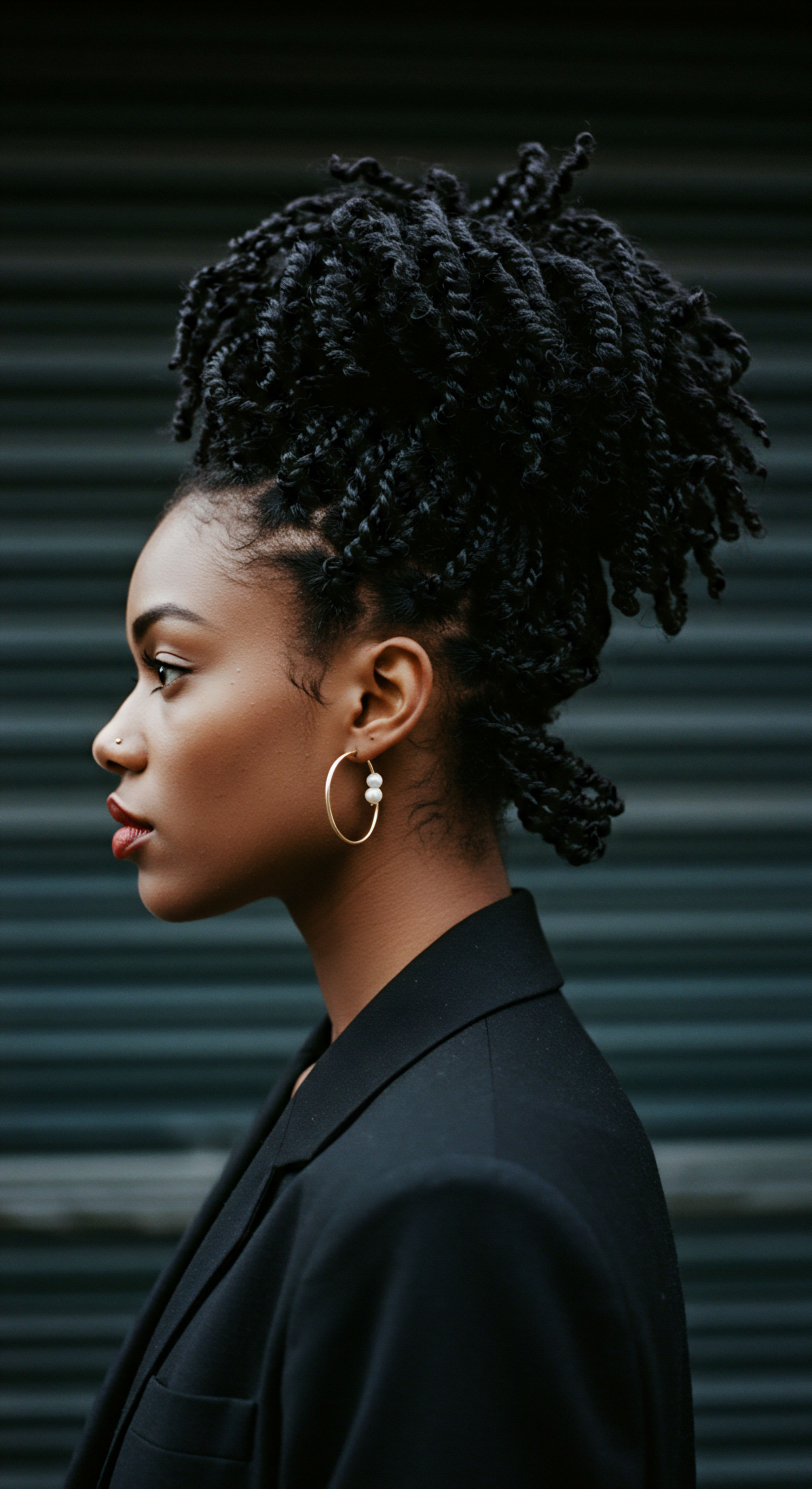
Relay
Having explored the foundational presence of lipids and the rituals that sustain them, we now journey deeper, into the intricate interplay where the molecular science of hair meets the rich tapestry of human experience. This is where understanding transcends the visible, inviting us to ponder the nuanced conversations between our hair’s biological makeup, the environment it navigates, and the ancestral wisdom that has long guided its care. The contribution of hair lipids to moisture balance is not a simple equation; it is a complex, multi-dimensional dialogue, revealing insights that challenge common perceptions and deepen our respect for the inherent resilience of textured strands.

The Biochemical Symphony of Hair Lipids
The lipids within our hair are not a monolithic entity; rather, they comprise a diverse collection of molecules, each with a specific biochemical role in maintaining the hair’s structural integrity and moisture regulation. This molecular diversity allows for a finely tuned system of defense and hydration.
- Ceramides ❉ The Mortar of the Cuticle ❉ Ceramides are a class of lipid molecules particularly significant in the intercellular cement of the hair cuticle. They act as a “mortar” that binds the keratinized cells of the cuticle together, forming a robust barrier. This tight cellular cohesion is essential for preventing excessive water penetration and minimizing moisture loss. When ceramide levels are depleted, the cuticle scales can become dislodged, leading to increased porosity and a compromised moisture barrier. Replenishing ceramides through targeted hair care products can help restore this vital structural integrity, improving the hair’s ability to retain hydration and resist external damage.
- Cholesterol and Fatty Acids ❉ Structural Allies ❉ Alongside ceramides, cholesterol and various free fatty acids (FFAs) contribute significantly to the hair’s lipid composition, both within the intercellular cement and on the cuticle surface. Cholesterol, though often associated with dietary concerns, plays a structural part in biological membranes, contributing to their fluidity and stability. Fatty acids, especially the unique 18-MEA, provide the hydrophobic character to the hair surface, which is critical for repelling water. The balance and proper arrangement of these lipids are what grant hair its inherent shine, softness, and its resistance to environmental fluctuations.

Hair Type and Lipid Distribution ❉ A Varied Canvas
The conversation around hair lipids becomes even more intriguing when considering the diverse landscape of hair types, particularly textured hair. While the fundamental components of hair lipids remain consistent across different ethnicities, their distribution, concentration, and structural order can vary, leading to distinct moisture behaviors.
For instance, research has shown that African hair, often characterized by its tighter curls and coils, can have a higher total lipid content compared to Caucasian or Asian hair. Yet, paradoxically, African hair has also been observed to exhibit a lower lipid order, meaning the lipid molecules are less uniformly arranged. This less ordered arrangement can contribute to a higher water diffusion rate, despite the greater overall lipid presence.
This suggests that it is not simply the quantity of lipids that dictates moisture resistance, but also their precise organization and the interplay with the hair’s unique structural geometry. This complex interaction underscores why textured hair often requires specialized approaches to moisture retention.
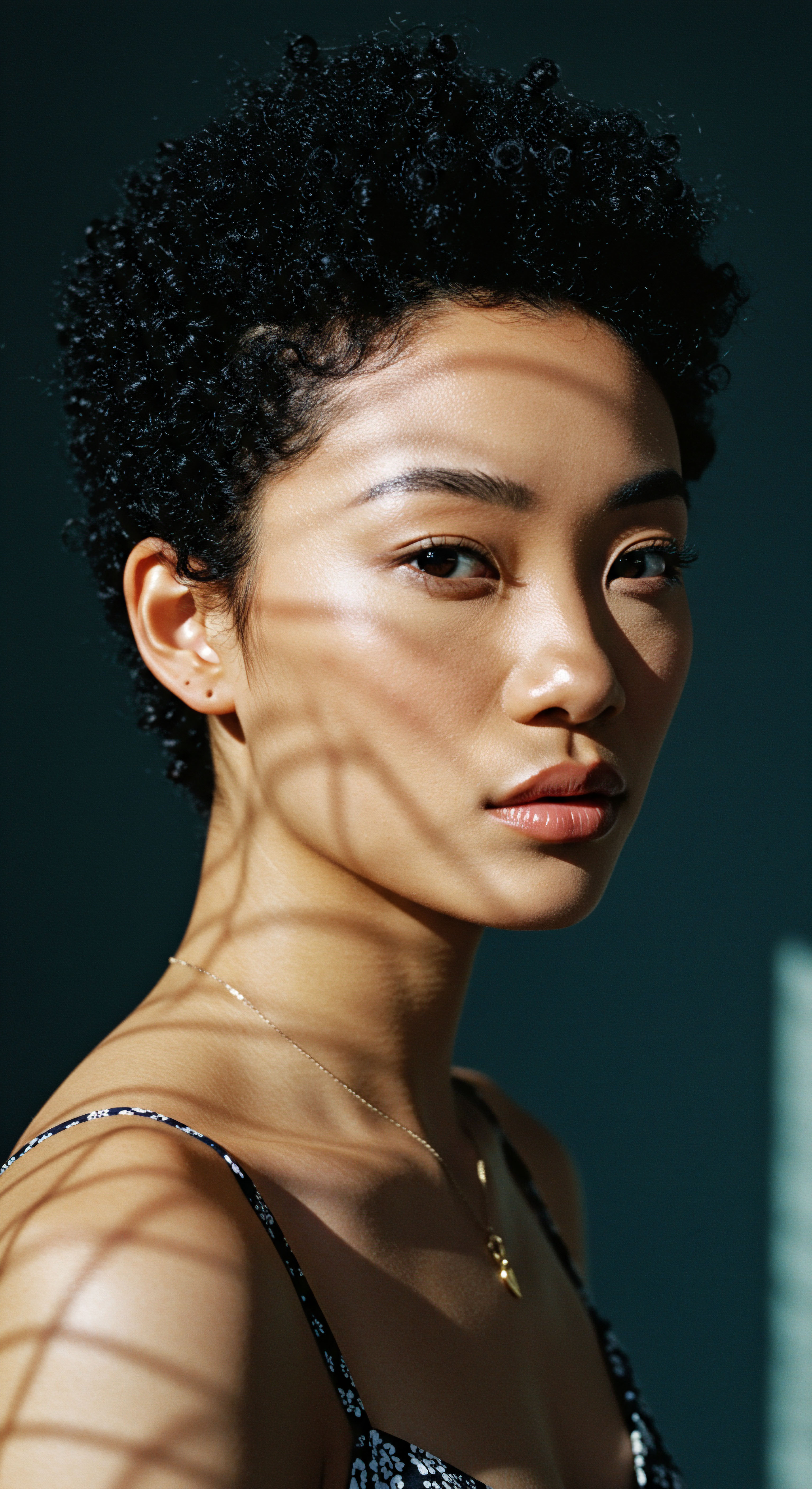
Beyond the Strand ❉ Scalp Lipids and Hair Health
The scalp, a vibrant ecosystem in its own right, plays a foundational part in the overall health of our hair, and its lipid profile is inextricably linked to the moisture balance of the strands it nurtures. The sebaceous glands of the scalp produce sebum, a complex blend of lipids that coats the hair shaft. This external lipid layer acts as a primary defense, providing lubrication, shine, and a barrier against environmental stressors like pollution and UV radiation.
A balanced production of sebum is crucial. Too little can leave the scalp and hair dry, vulnerable to irritation and moisture loss. Too much can lead to an oily scalp, product buildup, and potential issues like folliculitis.
The scalp’s lipid barrier also protects against the penetration of irritants and regulates the scalp microbiome, which in turn can influence the health of the hair follicles and the quality of the hair fiber that emerges. Thus, true moisture balance for the hair begins at the scalp, with its lipids providing a rich foundation for healthy growth.

Challenging Conventional Wisdom ❉ A Look at Lipid Permeability
A prevailing notion in hair care suggests that a robust lipid barrier primarily functions to prevent water from entering the hair shaft. While lipids certainly play a significant part in regulating water movement, some research presents a more nuanced picture regarding their role in water permeability. A study by Analytical Chemistry in 2020 indicated that, unlike skin, the deliberate removal of lipids from human hair did not appear to significantly alter its water vapor permeability. This finding, while perhaps counterintuitive at first glance, invites a deeper consideration of how hair interacts with moisture.
It suggests that while lipids are crucial for surface hydrophobicity, shine, and the cohesion of cuticle cells, the internal mechanisms of water retention within the hair fiber might be more complex than a simple lipid-as-water-barrier model. This prompts us to look beyond just the surface, towards the intricate dance between lipids and proteins within the hair’s deeper structures, and how they collectively govern moisture dynamics.
Hair lipids, from ceramides to cholesterol, orchestrate a biochemical symphony, varying in distribution across hair types and profoundly influencing moisture balance from scalp to strand.

Cultural Narratives of Lipid Care ❉ Ancient Wisdom, Modern Science
Across diverse cultures, particularly those with a rich heritage of textured hair care, practices centered on lipid replenishment have existed for centuries, long before the advent of modern cosmetic chemistry. These traditions often involved the use of natural oils and butters, intuitively recognizing their ability to seal moisture, soften strands, and protect the hair.
For example, the widespread use of shea butter and various plant oils in African hair care traditions speaks to an inherited understanding of these ingredients’ lipid-rich properties. These practices, passed down through generations, aimed to counter dryness and maintain hair’s suppleness in varied climates. Modern science now validates this ancestral wisdom, confirming that these natural emollients are indeed abundant in fatty acids and other lipids that support the hair’s natural barrier function. The convergence of these historical practices with contemporary scientific understanding offers a powerful testament to the enduring significance of lipids in nurturing textured hair, grounding our scientific inquiry in lived experience and cultural continuity.
| Lipid Type 18-MEA |
| Primary Location in Hair Cuticle surface (covalently bound) |
| Contribution to Moisture Balance Forms hydrophobic barrier, repels water, reduces friction. |
| Lipid Type Ceramides |
| Primary Location in Hair Intercellular cement (cuticle, cortex) |
| Contribution to Moisture Balance Binds cuticle cells, strengthens barrier, prevents moisture loss. |
| Lipid Type Cholesterol |
| Primary Location in Hair Intercellular cement, cortex |
| Contribution to Moisture Balance Structural stability, fluidity of lipid layers. |
| Lipid Type Free Fatty Acids |
| Primary Location in Hair Cuticle surface, intercellular cement, cortex |
| Contribution to Moisture Balance Contributes to hydrophobicity, overall lipid barrier. |
| Lipid Type Sebum Lipids (Triglycerides, Squalene, Wax Esters) |
| Primary Location in Hair Hair surface (exogenous) |
| Contribution to Moisture Balance Lubrication, shine, external protective film. |
| Lipid Type This table outlines the essential lipids within hair and their specific roles in maintaining hydration and structural integrity. |
Beyond surface-level understanding, hair’s lipid architecture, varied by type, collaborates with scalp lipids, forming a complex system influencing moisture balance.
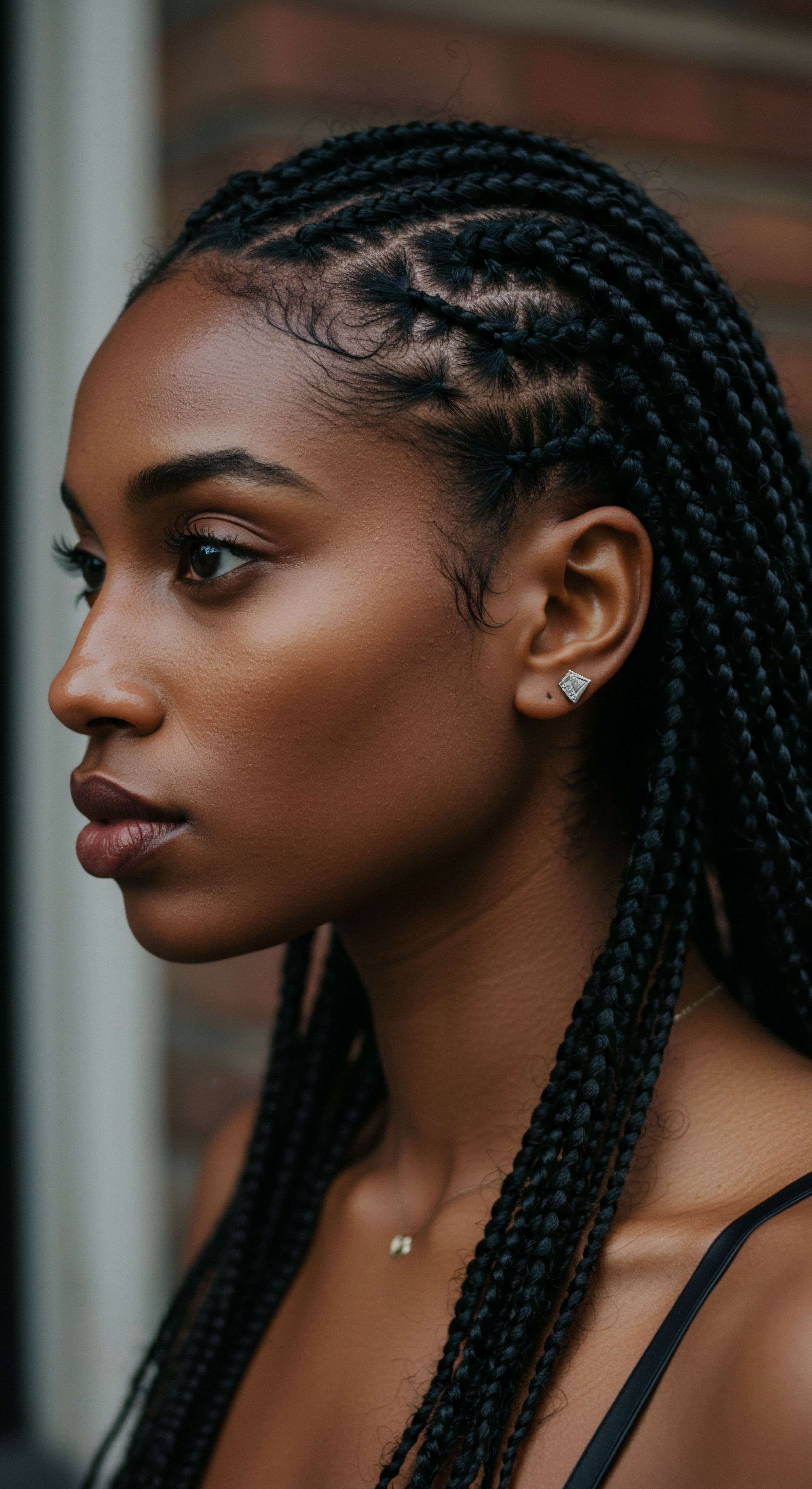
Reflection
To truly understand our hair is to embark upon a journey of discovery, a gentle unfolding of its intricate needs and profound resilience. The conversation around hair lipids and moisture balance is a testament to this deeper knowing—a recognition that our strands are not merely fibers, but living extensions of our being, responsive to care, environment, and even the stories we tell ourselves about them. As we look upon our textured crowns, let us see not just the curl or the coil, but the delicate, powerful architecture within, supported by the silent work of lipids, forever inviting us to listen, learn, and love them well.
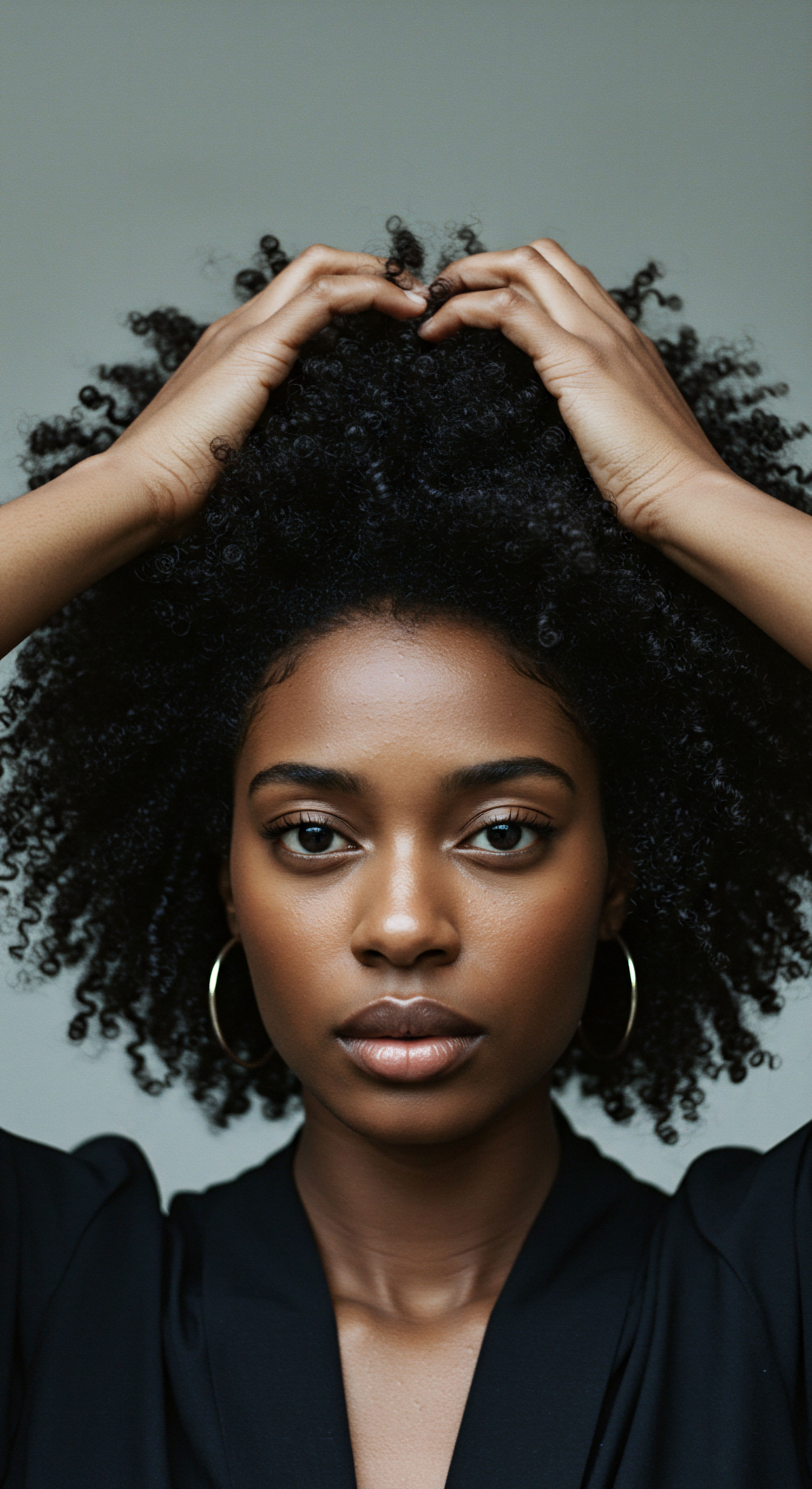
References
- Puskar, S. (2023). Hair Lipid Structure ❉ Effect of Surfactants. Cosmetics, 10(4), 107.
- Marsh, J. (1994). The Chemistry and Physics of Hair. Journal of Cosmetic Science, 45(4), 211-231.
- Robbins, C. R. (2012). Chemical and Physical Behavior of Human Hair (5th ed.). Springer.
- Jachowicz, J. & McMullen, R. (Eds.). (2019). Hair and Hair Care. CRC Press.
- McMullen, R. L. & Jachowicz, J. (2020). Hair and Hair Care ❉ A Practical Guide. CRC Press.
- Puskar, S. et al. (2022). A systematic review on the lipid composition of human hair. International Journal of Dermatology, 61(6), 675-685.
- Csuka, D. et al. (2020). Discrete Nanoscale Distribution of Hair Lipids Fails to Provide Humidity Resistance. Analytical Chemistry, 92(17), 11849-11855.
- Marsh, J. (2019). Prevention of lipid loss from hair surface and internal modification. Scientific Reports, 9(1), 9834.
- Gamage, S. K. et al. (2021). Ethnic Differences of the Damage of Hair and Integral Hair Lipid after Ultra Violet Radiation. International Journal of Cosmetic Science, 43(3), 320-327.
- Martins, J. M. et al. (2019). Role of Internal Lipids in Hair Health. Journal of Cosmetic Science, 70(1), 1-14.